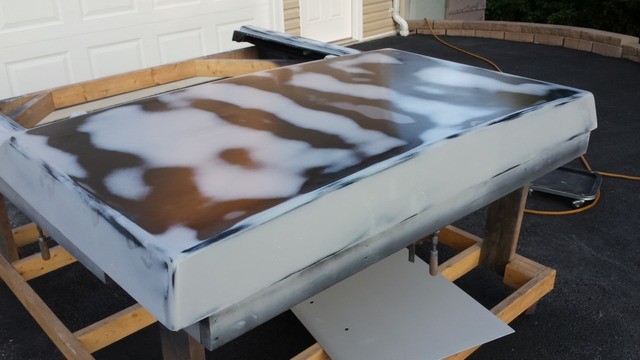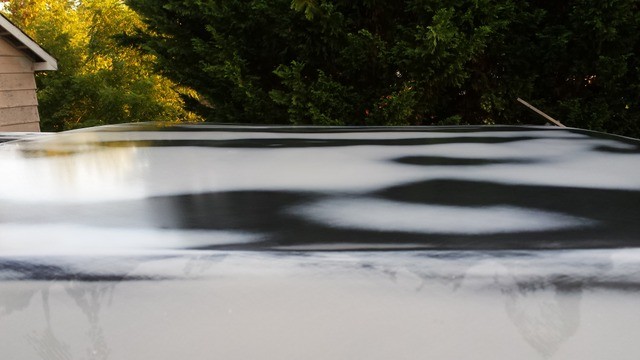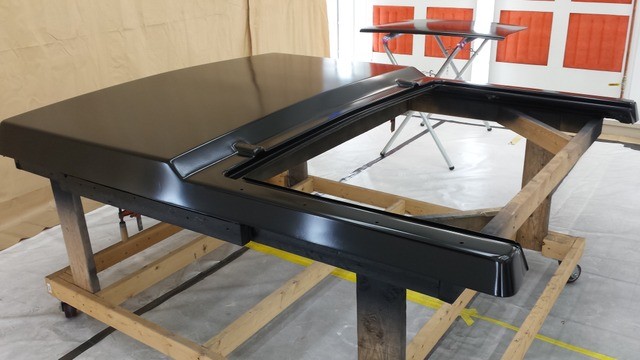rustover
Member
So I have my poly over spi epoxy and I'm block sanding. I started off my using my da on the large areas with 80 grit. It dried to a dark grey and when I cut it, it was light grey and was like a built in guide coat. Once I cut the skin off of it I guide coated it and begin blocking with 120 grit. I was able to cut down all of the guide coat back down to the poly, but in the mean time I broke through several places to the epoxy underneath. In one very small spot I even broke down to the factory grey primer.
I thought I would know where to stop, but know I'm not sure. It feels really good, the only difference I can feel is the 120 grit scratch. Its more pronounced over the epoxy than the poly. Ive still got some guide coat over spray to clean up. I'm almost thinking I could probably do two more coats of epoxy, block with 320, wetsand with 600 and the seal and paint.
I've got about 6 hours in getting this thing in 120 grit. This stuff sure is a lot of work.

What do you guys think / suggest? Thanks.
I thought I would know where to stop, but know I'm not sure. It feels really good, the only difference I can feel is the 120 grit scratch. Its more pronounced over the epoxy than the poly. Ive still got some guide coat over spray to clean up. I'm almost thinking I could probably do two more coats of epoxy, block with 320, wetsand with 600 and the seal and paint.
I've got about 6 hours in getting this thing in 120 grit. This stuff sure is a lot of work.

What do you guys think / suggest? Thanks.



